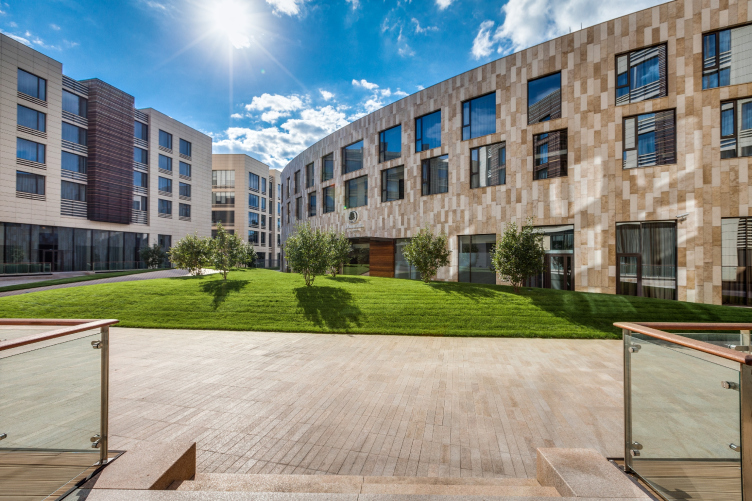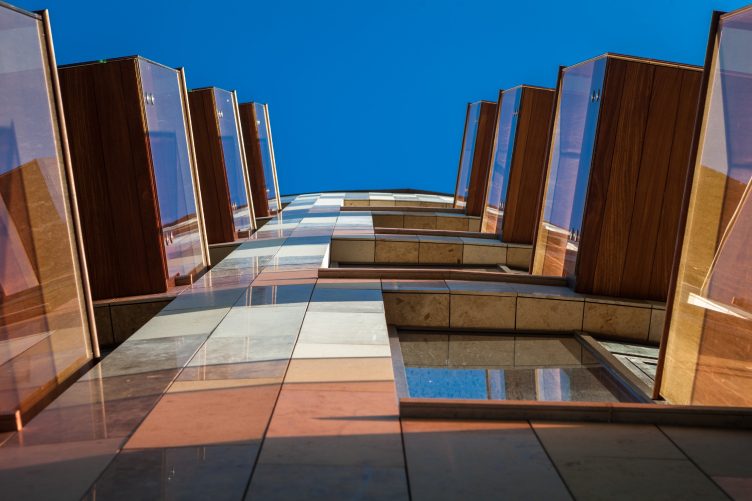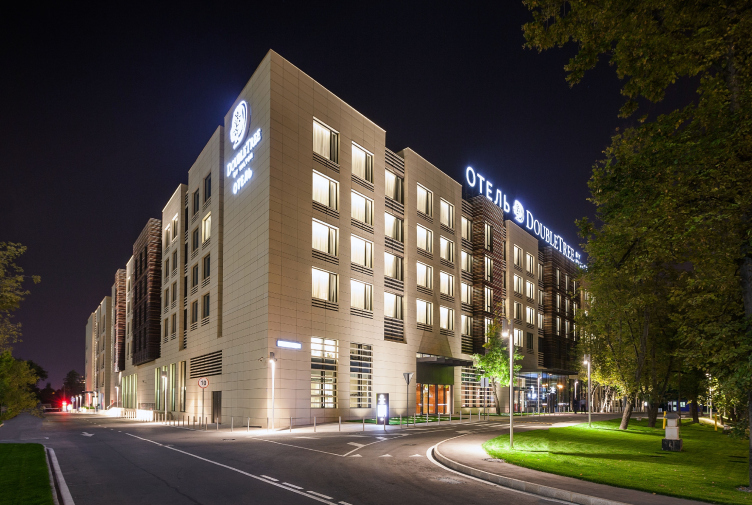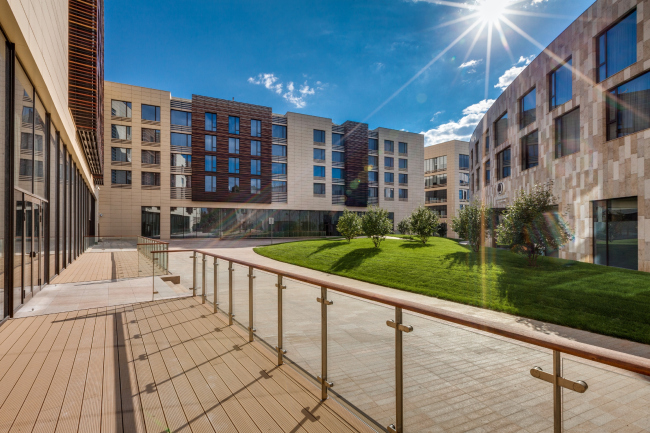
 |
In 2009, we already wrote about the project of this multifunctional complex. Now it is finished and one can be briefly see it while passing along the Leningrad Highway, or have a better look at it while sitting stuck in the traditional Moscow traffic. It should be noted that the land plot the complex stands on is untypical for the city, even rare. More frequently, the specification of the location in our city is quite clear-cut: either it is a busy street, a quiet center or a calm “block” territory. In this case, however, the surroundings are characterized by directly opposite qualities: it faces the noisy Lenigrad Highway, but it is situated in a green zone. Besides, it commands an extremely rare view for Moscow – a view of the river.
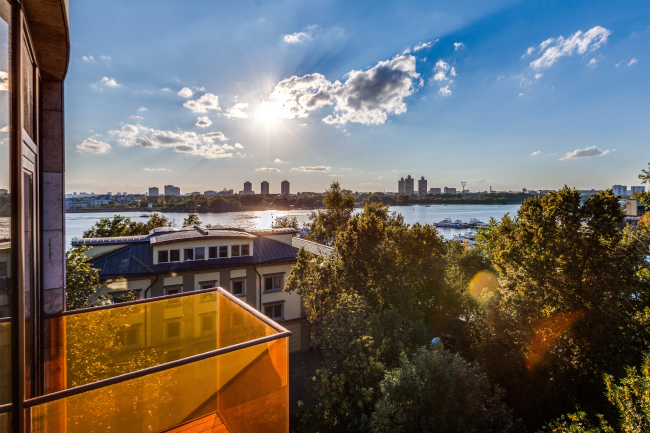
 |
In these circumstances, the authors of the project – architects Andrey Romanov and Ekaterina Kuznetsova – have naturally made a decision to fence the complex’s space off from the highway as much as possible and open it up to the park and the quay, all the more so, as a rather wide variety of different objects let them do it. The complex consists of two hotel buildings, one office building and a residential unit. Since the new hotel building was planned for the international chain Hilton, a number of strict demands and standards were to be met from the beginning. Particularly, the building was to be of a plain shape and with straight corridors inside. As a result, the main hotel building was placed along the highway defining the border of the quarter and isolating it from the city noise. It created a cozy quiet room, with a world of its own. Arranging the main façade against the thoroughfare makes perfect sense in terms of the hotel functioning: it “signals” its location and is easy to find for the guests.
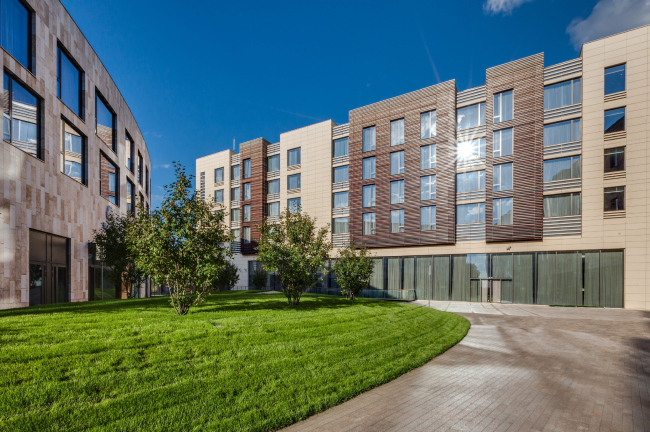
 |
Surrounding the lot with a fairly “stiff” frontal volume, the architects tried to save it from monotony by adding some variety of details and proportions. A number of risalits of varying width and organized in irregular rotation form an abstract composition, a kind of picture on the façade. These risalits not only jut out of the wall but also go above the top mark of the building – which makes the façade look very much like a city street: as if a line of houses of smaller scale is strung along light lines of “force fields” of some base. However, the unanimity of the design-code turns this likeness into a fleeting means to lighten up the composition and split up the mass. The projections interchange: risalits finished with ivory ceramic panels alternate with ones covered with brown-yellow horizontal hatch of a ceramic fillet. The thin slits between the ledges make the surface permeable and light as opposed to the neutrality of the solid clear background. The straw-colored part of the facades, however (under the windows and by the stairways), is also notched with “gill”-slits. It turns to be rather a graphic picture drawn with a pen and colored ink.
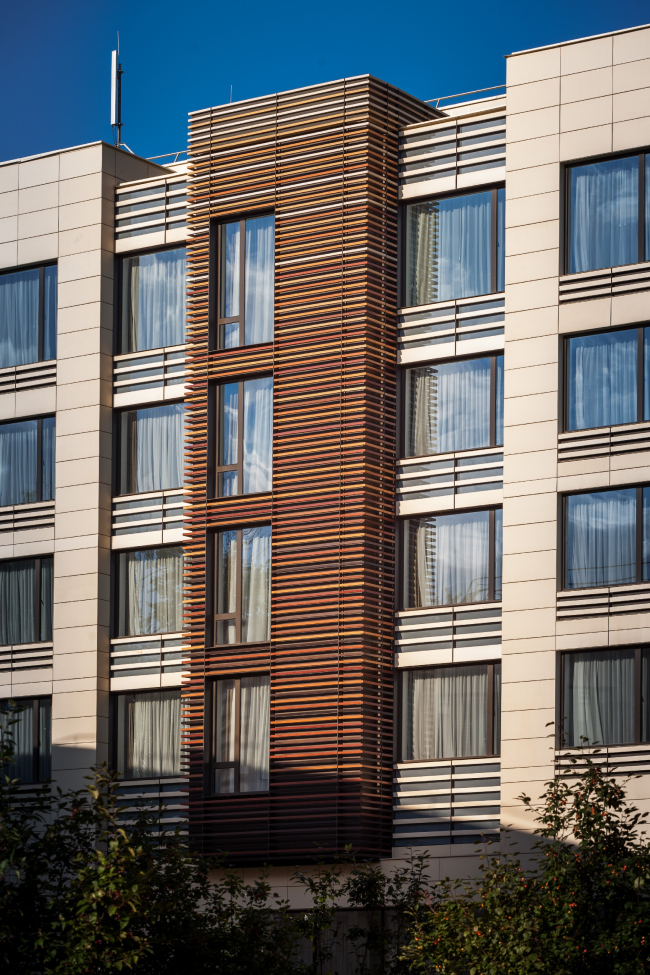
 |
Nevertheless, the frontal nature of the corner corpus was important to the architects and so they tried to keep it. Particularly, the glass entry vestibule, projecting far ahead, is transparent and hardly disturbs the straightness of the block.
If the quarter’s boundary is marked with right-angle volumes, the inside is dominated by smooth curvatures of the two oval buildings. These are the second hotel building and the residential unit for four apartments. Their volumes, placed at a right angle to each other, are contrastingly opposed: one is spread-eagle and the other one is vertical, but they share a common design technique – the false rhythm of window openings. They crowd together in one place and thin out in the other; form zigzags here and change their width there; they imitate movement, caught up by the projections of the transparent balconies. This variety, however, is always submitted to logic and rhythm: the apertures fit right in the horizontal lines, if the width of the windows rotates than the vertical line is the same. Every time there is a reference point that sets reasonable limit to the freely composed holland wall multiplied by the changeable oval curvature. Only the tall ground floor windows rising up from the ground may change their height – but also step by step.
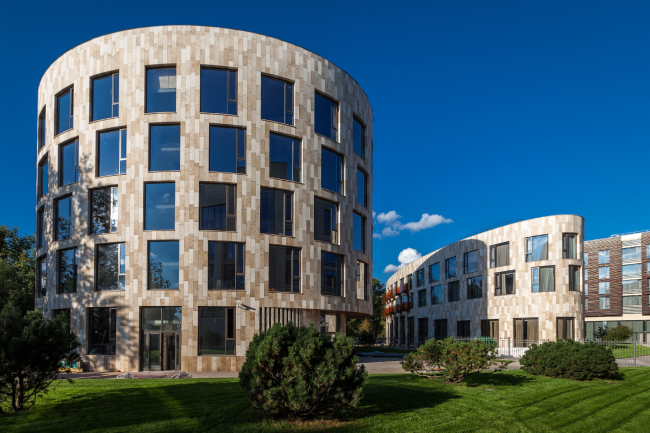
 |
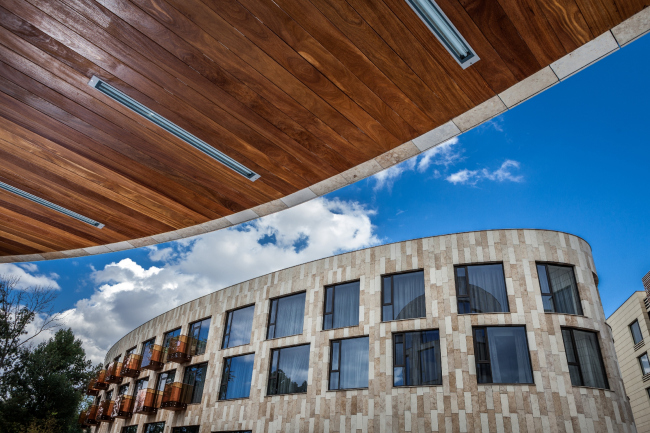
 |
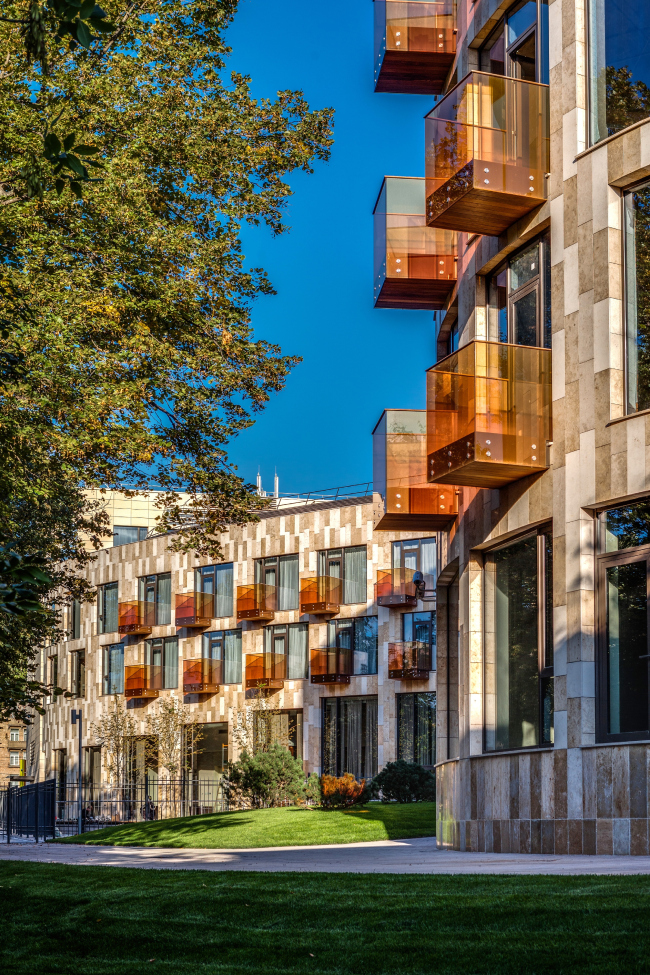
 |
Another peculiarity of the oval buildings is their particularly picturesque look: the asymmetry of the windows if caught up by the rich spectrum of the facade limestone colors. Contrasting with the smooth ivory surface of the corner building’s ceramic facades, the stone walls here are designedly of different tones: from light-beige to almost brown, and remind flat brush strokes. Their irregular “pixilated” interchange reminds the window “dance” but develops in the opposite direction – starting up from the ground. Besides, the pavement has almost the same pattern – which is why the park buildings seem to actually rise up from the ground, belonging to it with their texture and the natural, nominally “not-man-made” material. That is exactly the way it was planned: the perimeter corpuses “belong” to the city and the oval ones – to the park. The play of freedom and logic, nature and geometry, volume and picturesqueness might suggest plantation-style houses of romanticism and even remind of the stone roman towers rising up from the same stone pavement. These in no way “hotel business” associations, however, will be easily unveiled by the damp wind blowing from the river and the usual noisy Moscow highway.

 |
The courtyard of the complex is intended, among other things, for outdoor events – cocktails and parties. The theme of combining straight and wavy lines and surfaces occurs in the landscape project of this courtyard as well (ADM architects are very attentive to land improvement in many of their projects). A green tumulus is slit with even surfaces making a path to the entrance. The surfaces are covered with boardwalk and can be used as a podium or an amphitheater; one can even sit or lie on them. The illumination of the yard is also unusual: you will not find familiar lights here, instead, there are lamps built into paving that trace routs around the yard. The architects consider this illumination sufficient, since the hotel halls are to be constantly lit and the light will get through the stained-glass windows out into the yard.
Besides the image, based on a slight counterpoint, and the elaborate land improvement, the quality of apprehension and realization of various architectural details is another pleasant surprise in this project. Everything is well thought-out: the joints, the stitching and the sidewalls, abutting of stone windowsills to the walls, wooden edging strip of the glass fencings, timber mats of the lower parts of consoles with the built in lights – all that comes without saying in the European architectural practice, that makes up an inevitable background of improving methods and techniques, like a clean quilting seam on an expensive jacket. Perhaps, this handicraft perfectionism creates the feeling of tidiness – and one should not take offence by the word “handicraft”, for without the understanding that architecture is a craft; it stays all too “papery”. Perhaps it is the cleanness and accuracy that create this impression of an expensive, high-quality room that becomes complete once we get inside the yard – the feeling, so distant from the constant Moscow grubbiness, that it only makes one wonder.
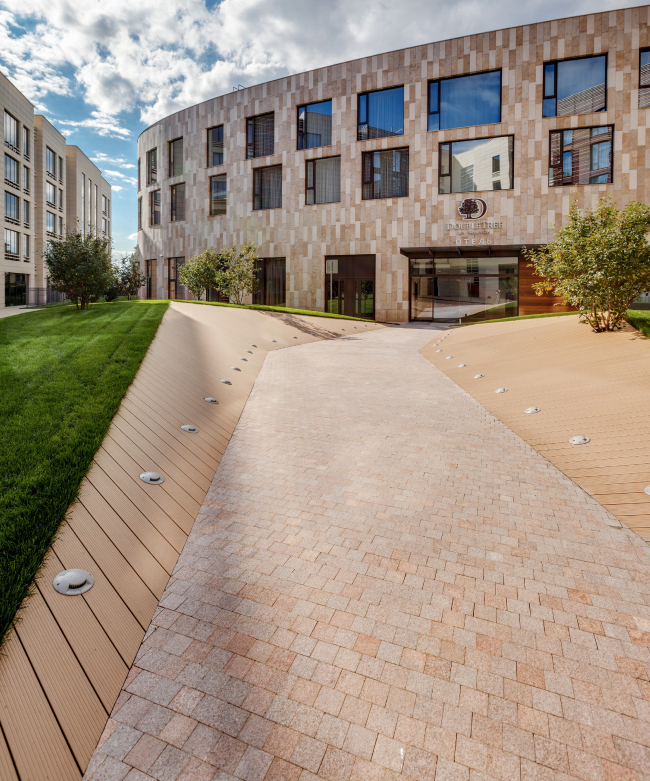
 |
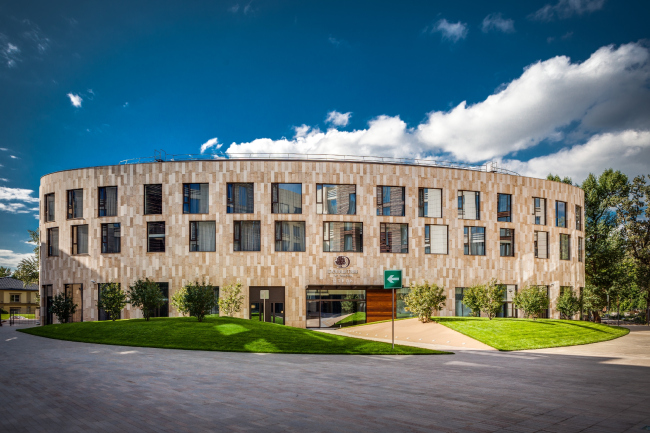
 |
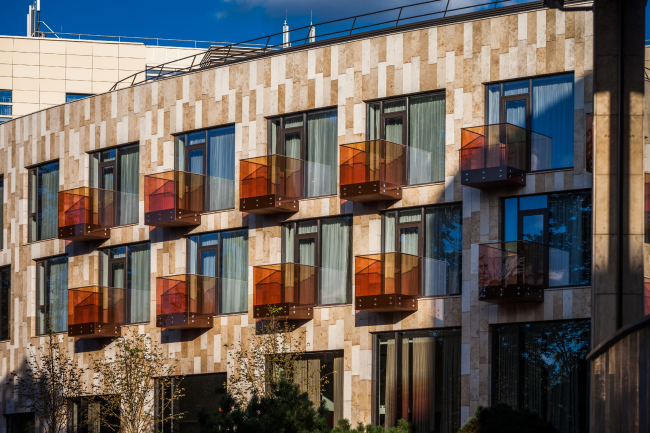
 |
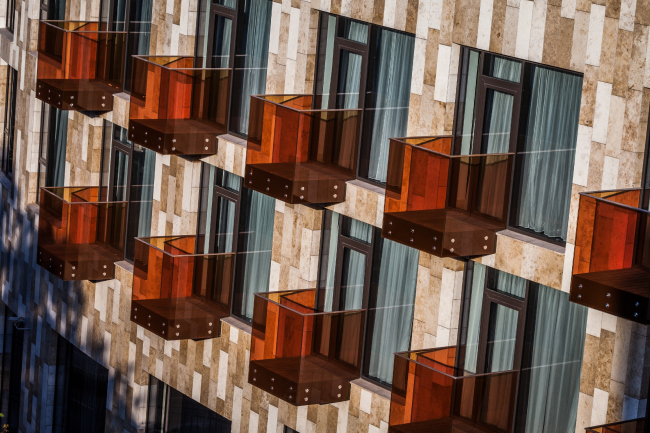
 |
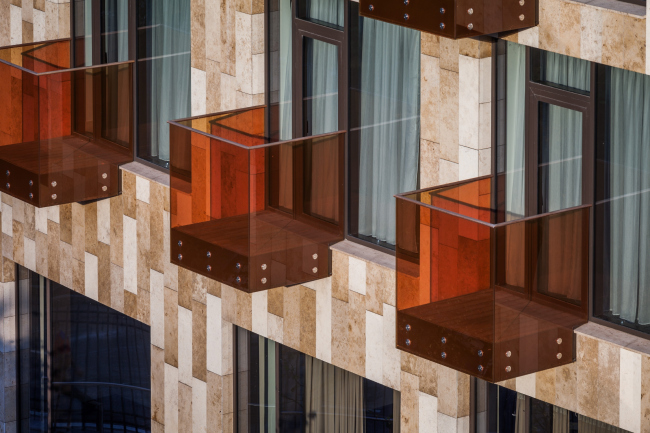
 |

 |
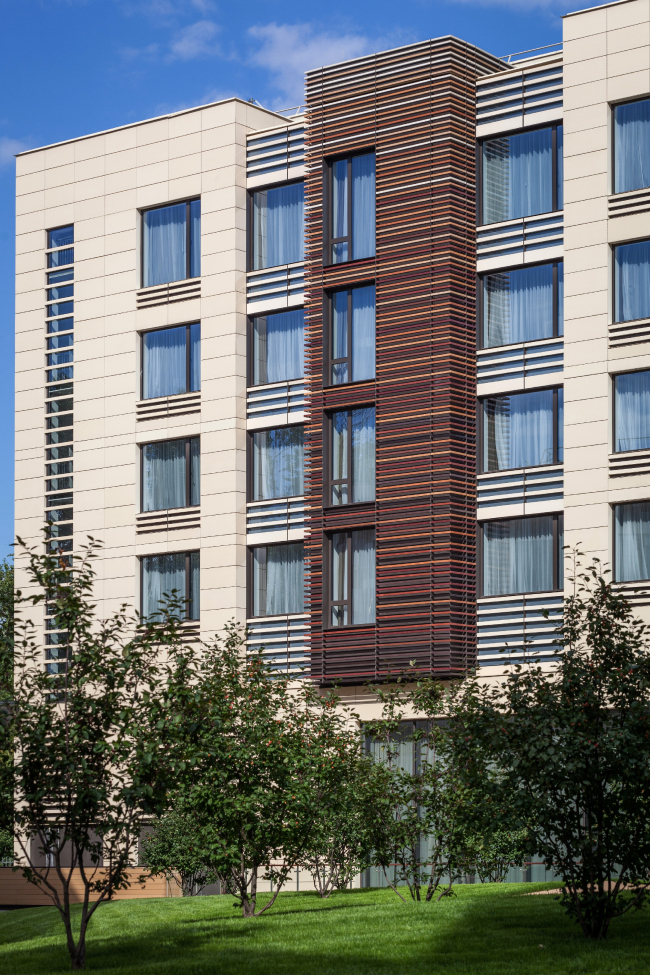
 |
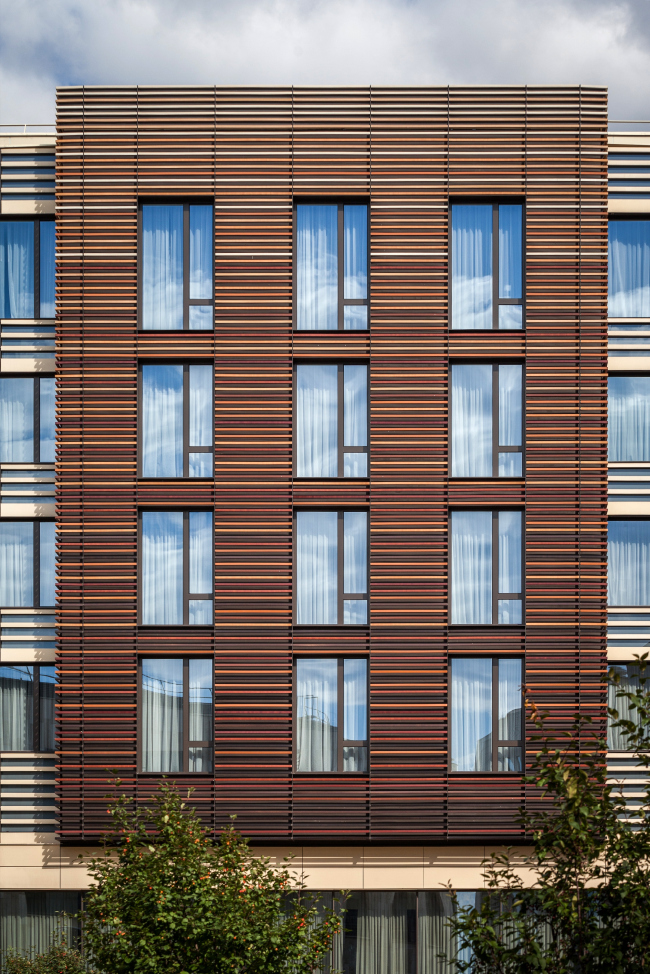
 |
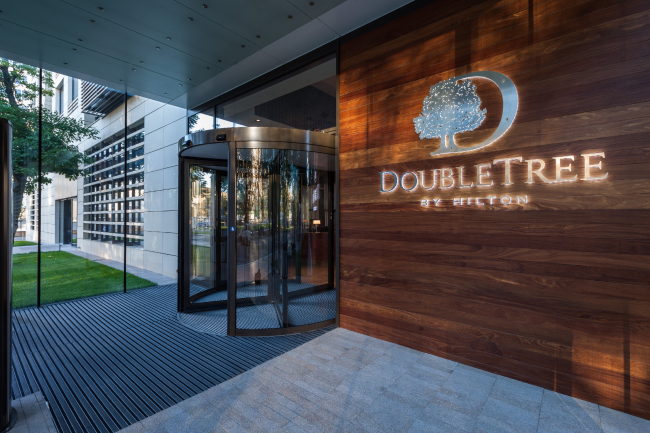
 |
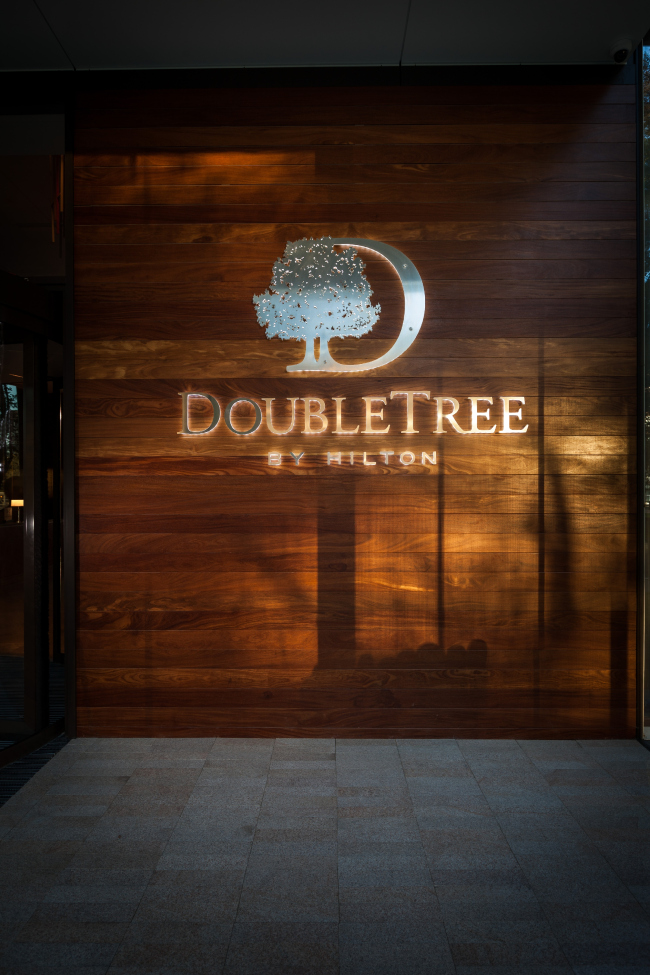
 |

 |












